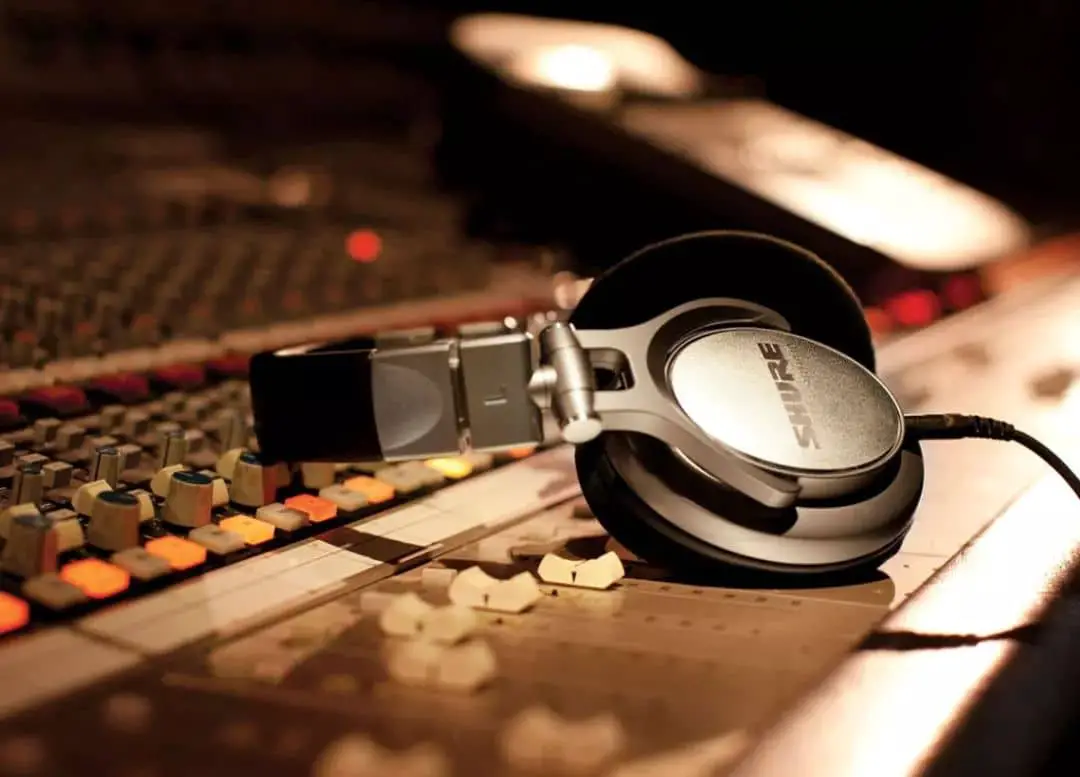What is Monitor Headphones?
As the name suggests, monitor headphones are used to “monitor.” Regardless of whether it is used for recording, or is used to detect the content of the enemy’s communication band on the ship, they can be called “monitor headphones.” The essential job of these headphones is to monitor and detect certain sounds. Monitor headphones mainly refer to headphones used in recording, stage, film and television media, music production, and other professional fields.
Listening to the headphone can be said to be a subclass of the headphone product. Its birth has precise positioning and usage orientation. Most users who buy monitor headphones know precisely what they are doing with it. For example, we often see singers wearing black or gold headphones in some recording studios. It is likely to be a Sony MDR-7506 or AKG K240S.

Different monitoring headphones have their specific tasks in various fields. For example, the monitoring headphones worn by the singer in front of the microphone should use closed-back. Because the singer uses it to listen to the accompaniment, it can not be detected by the microphone with high sensitivity because of the leakage of the headphones.
For a sound engineer, the role of monitoring headphones is often not as significant as for a singer. They may prefer to use monitor speakers rather than headphones. But monitor headphones and monitor speakers play a “complementary” role.
Because the speaker of the headphone is closer to the ear than the desktop speaker, the details that the headphone can display are richer. Therefore, in the process of picking up faults and finding errors in the recording, the role of monitoring the headphone comes into play. Besides, in the recording studio, the monitor headphones may not be the same as the content played by the monitor speakers. In this way, you can listen to the contents of the monitor headphones and speakers at the same time without interference.
Types of Monitoring Headphones
Just like when we buy an ordinary headphone, monitor earphones have their classification. Their classification is often divided according to the usage requirements and scenarios.
Although the headphone’s replacement may be slower than that of the mobile phone, there will still be non-stop iterations. AKG’s K240 series is an evergreen tree among monitor headphones. This series has been born for more than thirty years now. Therefore, we see that K240S is a typical head-mounted over-ear monitor earphone, widely used in recording studios, radio, media, stage, and other fields. So let’s start with the most common over-ear headphones.
Over-ear Headphones
Compared to in-ear headphones, over-ear headphones will have better sound performance. The wearing stability of the headset is better than the former, and can also be made into an open or closed type. The different construction makes these types of headphones have some sound field differences, affecting the use scene.
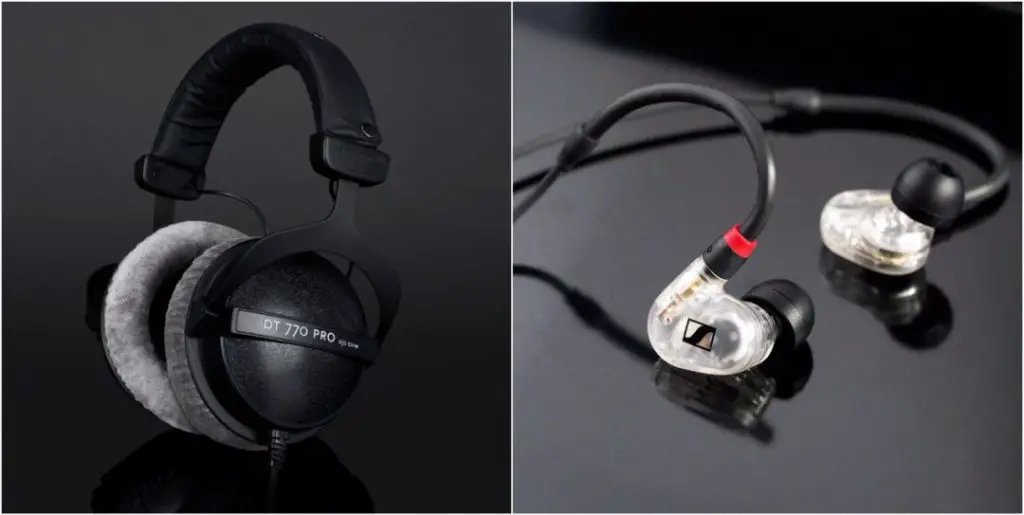
Closed-Back Headphones vs. Open-back headphones
Closed-back headphones, such as Audio-Technica ATH-M50X, the sound unit is in a closed cavity. The back of the sounding unit is not connected to the outside world. It can block part of the noise when used.
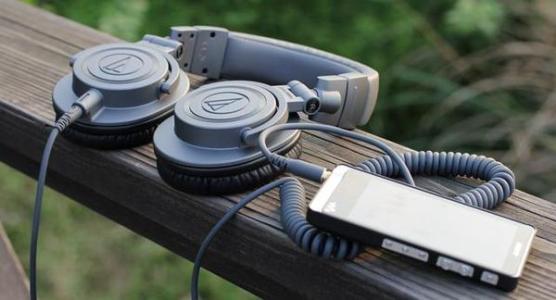
Open-back headphones, such as Sennheiser HD650, are connected to the outside of the sound unit. Usually, some holes can be seen on the headphone shell, and even the internal unit can be directly seen. When using it, external noise can be heard. And the sound played in the headphones can also be heard from the outside.
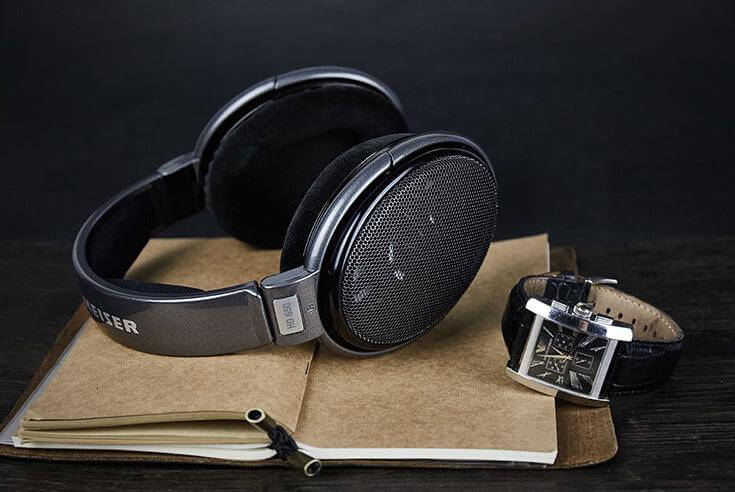
In general, closed-back monitor headphones, ear pads are mostly leather or unique sound insulation materials. The sound field is not wide enough. The open-back monitor headphone sound field is more open and natural. It would help if you decided which one to use according to the purpose of the headset and the usage scenario.
The singer can only choose closed-back headphones because the most basic requirement is not to leak sound. Condenser microphones are extremely sensitive. If the headphones leak, accompaniment, metronome, etc. will be recorded into the microphone, it will cause trouble for post-production.
It is recommended to choose the open-back monitoring headset for mixing the monitoring environment and working with headphones for a long time. The sound field will perform better, and the other is that the pressure on the headphones is also less. When working with headphones for a long time, comfort should also be considered.
If you take both recording and mixing into account, you can only choose a closed-back monitor headphone.
However, most closed-back headphones’ sound performance is not necessarily as good as the open back headphone at the same price. And the open-back headphones are more robust than the closed-back headphones in low-frequency response and sound fields. But for the singer, he doesn’t need the sound quality of the headphones itself. He needs to be able to hear the accompaniment accurately.
Can Monitor Headphones be Used to Listen to Music?

The monitoring headphone itself is for music, and the birth of a piece of music is often inseparable from the monitoring headphones. But why do we sometimes say that monitor headphones are not “suitable” for listening to music?
We all know that each headset has its unique tuning style. And its sound style itself is designed by the tuner to be able to perform more beautifully in certain types of music.
But the monitor headphones are different. To better discover the problems and deficiencies in music production, the monitor headset itself needs to have a balanced sound in the entire frequency band, and it cannot deliberately highlight a particular frequency band.
HiFi headphones, for example, cannot be used as monitor headphones, because the excessive low-frequency volume of the headphones makes the sound engineer mistakenly think that the low frequency of the music is sufficient. After being played by ordinary headphones, you will find that there are few low frequencies. And if the sense of low-frequency volume is too broad, it may cover up some hard-to-find details. Therefore, most monitor headphones will not have too much sense of low-frequency volume.
Therefore, the sound of the monitor headphones should be as straightforward as possible. The tri-band (low, mid, high) distribution should be as uniform as possible. That is an ideal, high-quality monitor headset.
The Impedance of Monitor Headphone
Although “high impedance” headphones have more significant potential, improper matching can also be counterproductive. Most of the audio interfaces, mixers, and built-in headphones have limited output thrust. They can probably match headphones below 80 ohms. If you select a headset with higher impedance, the headset’s output power cannot be better matched, and the headset will sound weak. Therefore, high-impedance headphones need to be used with independent headphone amplifiers.
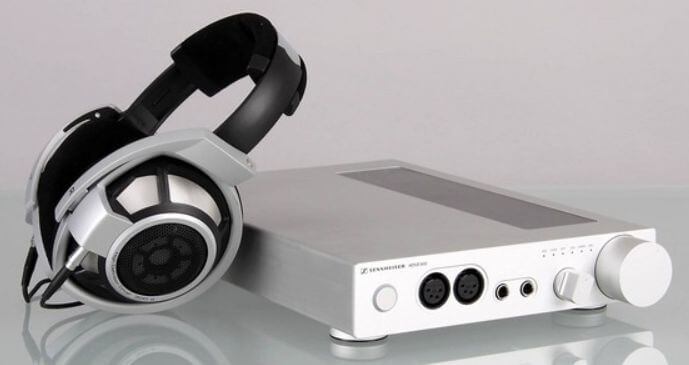
The monitoring headphone also pays attention to the selection of the amp. Improper matching of the amp will aggravate the sound staining. What the monitor needs are as little staining as possible.
Like Sennheiser, Beyerdynamic has recommended original amps. The amp’s lifting effect is pronounced, Sennheiser HD 650 (impedance 300 ohms), Beyerdynamic DT770 Pro (impedance 280 ohms). Using Apogee Groove amp to push, and plug directly into the sound card, are completely two effects.
How to Choose Monitor Headphones
Step 1: Frequency Response
This indicator for monitoring the headphone generally indicates the range from the lowest frequency that the headphone can play to the highest frequency. The frequency range that the human ear can hear is 20 Hz to 20,000 Hz, which is the highest and lowest limit range of the human ear. So the frequency response of the headphones should not be lower than this range.
Although the human ear’s listening range is 20hz to 20khz, most music cannot reach such high frequencies, such as human voice. Of course, the wider the range, the higher the capabilities of the headset. The indicators of some headphones generally exceed this range. For example, some headphones have a frequency response range of 10Hz-23kHz.
Step 2: Headphone Impedance
Generally speaking, the lower the impedance, the easier the headset will make sound, and the easier it will be driven. Some good quality, professional monitor headphones impedance will reach more than 200 ohms. This high ohm is mainly to match the headphone jack on a professional mixer (like mixer). If you use a resistance headset on a professional machine, be sure to turn down the volume first and slowly turn it up. That is mainly to prevent the headphone from overloading and burning out or causing the headphones to break the sound. It also helps protect your hearing. For general headphones, the low-impedance headphone will be selected. Such headphones are relatively easy to drive.
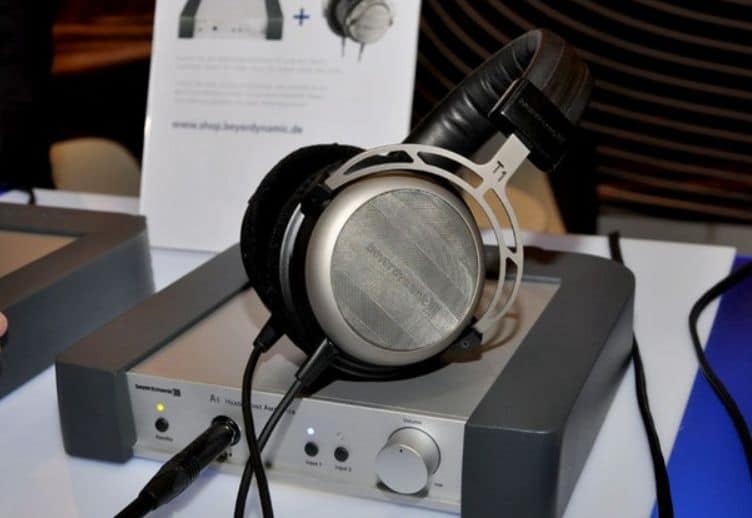
Step 3: Headphone Sensitivity
The higher the sensitivity of the monitor headphones, the lower the input power. If it is the same power source, the larger the output sound. For professional monitor headphones, sensitivity is an essential indicator for choosing a good pair of monitor headphones. Compared with the same sound source, headphones with a sensitivity of 120db and headphones with 60db, you can find that the former can hear more details.
Step 4: Headphone Material and Weight
If you choose a closed-back headphone, using a highly sealed ear pad that is not easy to leak is an essential factor. Because the ear pads with excellent airtightness are adopted, it can surely prevent sound leakage and fully enjoy the high sound quality. Also, consider the weight of the headset. Lightweight will ensure a pleasant experience while listening to music.
Step 5: Comfortable to Wear
Before buying a pair of monitor headphones, be sure to try it to see if it is comfortable to wear on the ear. Some earphones may cause an uncomfortable feeling for a long time. No matter how good or expensive the headphones are, they are painful and unsuitable. When choosing a good pair of monitoring headphones, it meets the above requirements, and the ears are comfortable, which is perfect.
Conclusion
In judging whether the sound quality of a pair of headphones is good, the above is just a few introductions from the parameters. If you want to choose an excellent professional monitoring headset, you must listen to it to determine whether it is suitable for yourself. Whether the details of the headphones are rich, the sound level is clear, the positioning is accurate, the extension of high frequencies and the dive of low frequencies, etc. The quality of these sounds can only be heard by trial listening, not by looking at the parameters.
